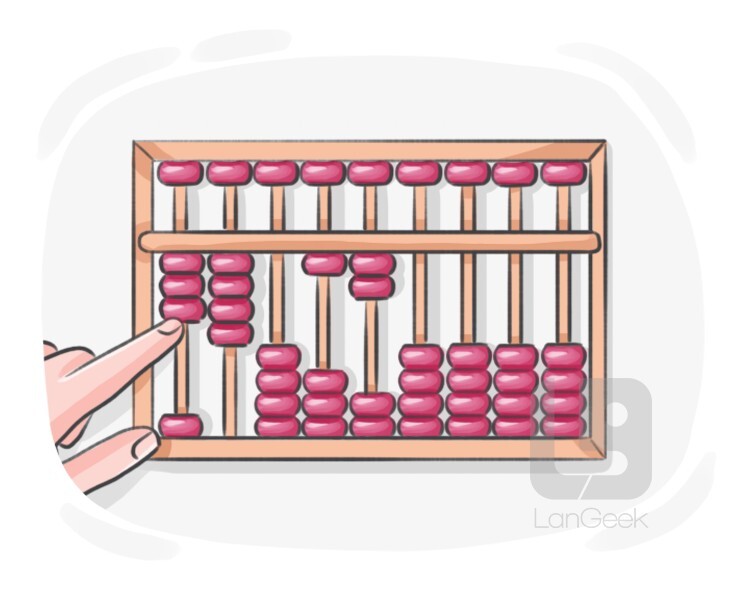Suchen
Wählen Sie die Wörterbuchsprache
Abacus
01
Abakus, Rechenbrett
a tool used for counting and calculating that consists of a frame with rods or wires on which beads or stones are moved up and down using hands

Beispiele
The teacher showed the children how to use an abacus for basic math.
Der Lehrer zeigte den Kindern, wie man einen Abakus für grundlegende Mathematik verwendet.
Merchants in ancient times often used an abacus for calculations.
Händler in alter Zeit verwendeten oft einen Abakus für Berechnungen.
Beispiele
In classical architecture, the abacus is the flat slab that sits atop a column's capital, providing a stable platform for the entablature above.
In der klassischen Architektur ist das Abakus die flache Platte, die auf dem Kapitell einer Säule sitzt und eine stabile Plattform für den darüber liegenden Architrav bietet.
The Ionic order is characterized by its distinctive volutes and decorated abacus, adding elegance to the column's design.
Die ionische Ordnung ist durch ihre charakteristischen Voluten und den verzierten Abakus gekennzeichnet, was dem Säulendesign Eleganz verleiht.




























